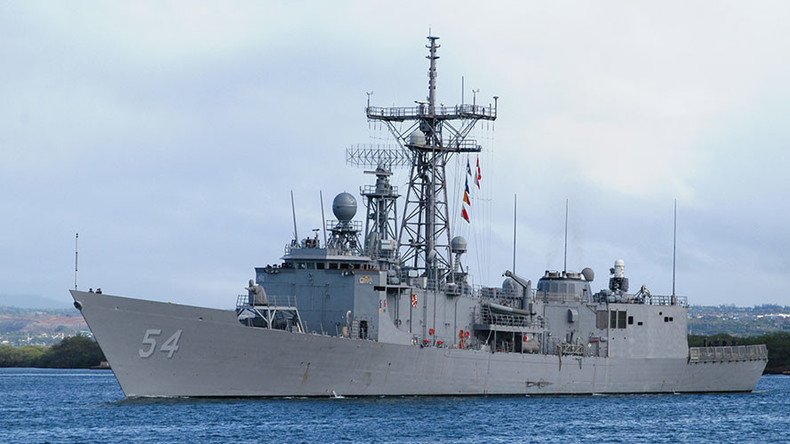Find frigates: US Navy calls for small ships packing bigger punch

The US Navy has decided it cannot get by without frigates after all, issuing a request for ideas to build a future class of small surface warships starting in 2020, half a decade after the Pentagon originally nixed the frigate.
The preliminary request for ideas (RFI) was posted on the federal contracting portal on Monday, with the Navy looking for the future guided missile frigate (FFG-X) to supplement the fleet’s surface and undersea warfare capabilities, allow independent operations in a contested environment, and “relieve large surface combatants from stressing routine duties during operations other than war.”
US #Navy's FFG(X) #frigate RFI is out - this is no #LCS, folks. So which foreign design is it?. Read it yourself at https://t.co/cLDgutFcGIpic.twitter.com/zxmSVMkDJW
— Chris Cavas (@CavasShips) July 10, 2017
Russia, France and the UK have about a dozen frigates each, while China has almost 50. The US Navy, on the other hand, decommissioned its last frigate in September 2015. Under the Obama administration's plan, the Oliver Hazard Perry-class ships were supposed to be replaced by the futuristic Littoral Combat Ship (LCS) concept vessels.
Unfortunately for the Navy, the LCS vessels have been plagued by design and performance problems, and testing has determined they lack the survivability to actually operate in contested coastal waters. The original goal of 50 ships has been cut in half, and less than a dozen ships have actually been built.
Exclusive Interview: The Navy's Surface Warfare director talks frigate requirements from @davidlarterhttps://t.co/ffmrAut47i
— JenJudson (@JenJudson) July 11, 2017
“Obviously we want to get the most capability for the best price,” Rear Admiral Ronald Boxall, head of the Chief of Naval Operations Surface Warfare (N96) office, told Defense News. “This is an effort to get the design right up front.”
While he did not want to commit to a price, Boxall called the range between $600 million and $1.2 billion per ship “in the ballpark.”
“We know we could get ships to do all kinds of things, but you can also go broke doing it,” he added.
One major departure from the LCS concept would be equipping the new frigates with defensive missiles. While the exact nature of the launchers is left open in the RFI, the Navy is “particularly interested” in using something that could support existing technology, such as the Evolved Sea Sparrow Missile (ESSM) Block 2, or Standard Missile-2 (SM-2) defensive missiles.
The request was a “clear admission from the Navy” after a decade spent chasing the LCS concept “that it needs a real frigate, and one with robust air defense capabilities," wrote military analyst Joseph Trevithick.
Finally, after so much BS, Navy admits it needs a frigate to operate in most combat enviros w/out Aegis umbrellahttps://t.co/SaI28dQU0U
— Tyler Rogoway (@Aviation_Intel) July 11, 2017
Another notable thing about the request is that it did not specify a minimum or maximum size for the final ship design, but did limit the crew to 200 sailors.
“We don't want the ship to be so big that it competes with the destroyer,” Boxall explained. The new class of frigates will have to have multi-mission capability and operate independently, however.
“We want to see what industry comes back with,” Boxall said. “From there, we'll lock it down and go into the detailed design and construction phase and we can get this thing out by 2020.”
One of the possibilities, Trevithick pointed out, would be to adopt the Multi-Mission Surface Combatant (MMSC) design that Lockheed Martin is developing for Saudi Arabia under a $6 billion deal.
Though based on the Freedom-class LCS, the MMSC is supposed to have the improved radar array, vertical and containerized missile launchers, and an improved 76-millimeter main gun. More importantly, the Saudis will have paid for most of the research and development costs.











